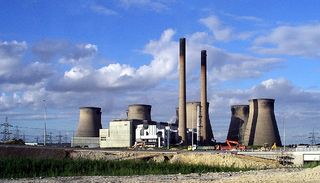Baseload power

Baseload power refers to the minimum amount of electric power needed to be supplied to the electrical grid at any given time. Day to day trends of power usage need to be met by power plants, however it is not optimal for power plants to produce the maximum needed power at all times. Therefore there are baseload power plants like coal-fired power plants which provide the minimum needed electricity, and peaking power plants which meet the fluctuating needs. Demand for electricity fluctuates vastly throughout a day, so baseload power is not necessarily enough. The grid requires the use of peaking power, which is electricity supplied to match the varying demand in electricity.
Baseload power must be supplied by constant and reliable sources of electricity. They are sometimes dispatchable as well, in order to cover for unreliable intermittent electricity sources. Power plants that provide baseload power often run year round - therefore having a high capacity factor - and use non-renewable fuel. Some baseload power plants include coal-fired power plants and nuclear power plants.
For Further Reading
- Peaking power
- Electrical grid
- Or explore a random page
References
- ↑ Wikimedia Commons [Online], Available: https://upload.wikimedia.org/wikipedia/commons/7/76/Ferrybridge_%27C%27_Power_Station_-_geograph.org.uk_-_35089.jpg

